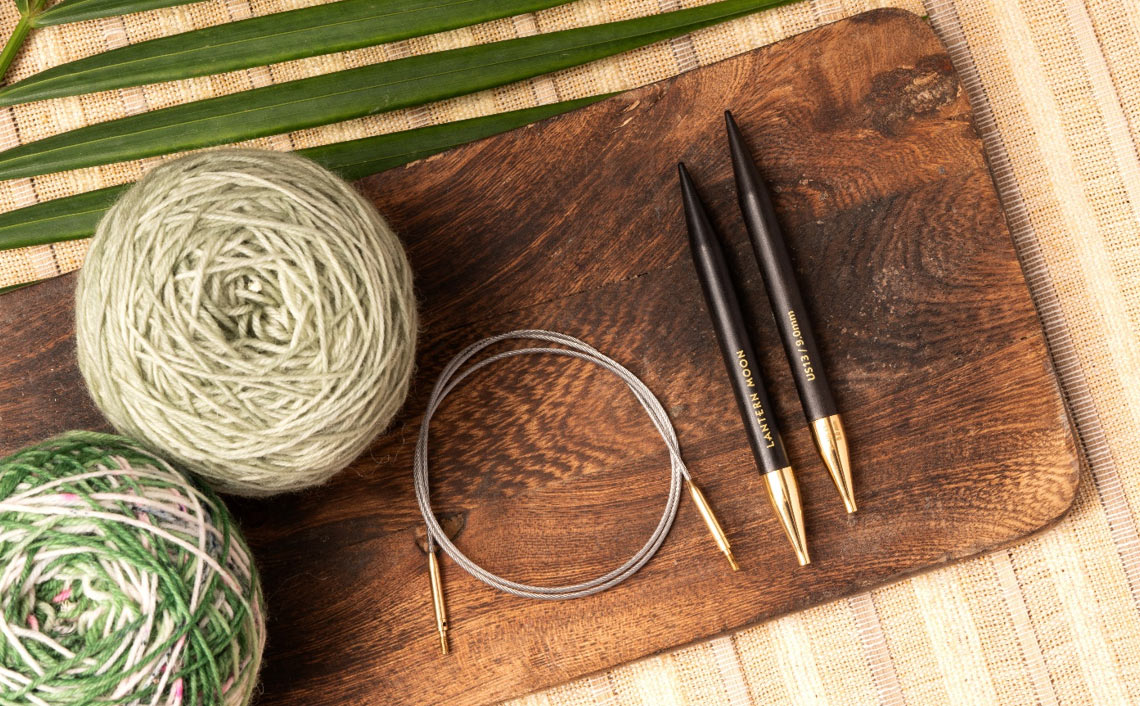
Many times after you’ve put away your knitting needles you see the project edges curling. This makes your project unprofessional and sloppy, hiding your hard work. So, what can you do to get smooth, polished edges? And why does this happen? Let's explore the reasons and fixes so knitting projects always have a polished appearance. Neat edges can elevate your knitting to a new level, whether you're creating a blanket, snug scarf, or complicated sweater. You can refer to our blog on how to knit edges to make your project masterpiece and put them to use in your project. In this blog, we’ll explore tips to knit edges that do not curl.
Explore Techniques to Knit Neat, Non-Curling Edges
There are several techniques that you can try to prevent curling edges. We will share some methods that will make your project the perfect aesthetic. Let's get started with your double-pointed knitting needles or circular ones.
1. Adding Slip- Stitch Selvage
The term selvage refers to the right and left side piece of knitting. As you know, curling occurs due to yarn tension and fault lines. One of the simplest ways to achieve clean, straight edges is to add a slip-stitch selvage. Using this method, the first stitch of each row is slipped purlwise, or with the yarn in front. This keeps the edges from curling and smooths them out.
How to do it:
- Slip the first stitch purlwise on each row, with the yarn in front.
- Follow your pattern's instructions to knit or purl the remaining stitches.
- To keep it balanced, always knit the final stitch in the row.
2. Add a Garter Stitch Border
A garter stitch is inherently flat and a great choice for borders. You can either add garter stitches to the sides of your fabric or knit every stitch in the first and last few rows to make a garter stitch border.
How to do it:
- Right Side: Knit across all the stitches
- Wrong Side: Knit two stitches, purl all stitches, and then stop two stitches before the edge, knit two.
- Depending on the size of the project, add 3 to 5 garter stitches at the start and finish of the row. You can learn how to knit garter stitch through our blog.
3. Try Seed Stitch Border
You can use a seed stitch similar to a garter. The seed stitch is functional and aesthetically pleasing since it adds texture and keeps things from curling. Refer to our blog for how to knit seed stitches on circular needles.
How to do it:
- Right Side: P 1, K1, P1, Knit across, P1, K1, P1
- Wrong Side: P 1, K1, P1, Purl across, P1, K1, P1
4. Add Rib Stitch
Adding a rib stitch is another way to prevent curling. You can add flexibility by ribs stitch. It's ideal for necklines, cuffs, and sweater hems. In the rib pattern, alternating knit and purl stitches in the same row or rounds. Learn through our blog how to knit the rib stitches.
How to do it:
- Along the edge, switch between knit and purl stitches.
- To give the ribbing additional rigidity, use a tighter tension.
5. Adjust Yarn Tension
Yarn tension can have a significant impact on your project. Your edge stitches will appear uneven and curl more if they are too tight or too slack.
How to improve it:
- When knitting, practice maintaining a constant tension.
- To evenly guide the yarn, use your fingertips.
- Try several needle sizes to see what suits you best.
6. Add a Crochet Border
You can strengthen the edges of your item with a crochet hook if it is already curling. To stabilize the edges, crochet a border around them. You can do this by adding a row or double chain stitch to either side.
7. Lining the Fabric
If you know sewing, it would be easy for you to add a lining at the back of your fabric. But make sure your yarn weight should match the yarn fabric. It is essential to block the project before you sew. We recommend picking up the sharp finishing needle and lining it by hand.
8. Blocking Your Knitting

The secret technique of all knitters is blocking. Curl can be avoided by reshaping your piece and setting the stitches with steam blocking or wet blocking. The blocking method depends on the yarn used and the stitch patterns.
How to block it:
- Using lukewarm water, soak your project for 30 minutes.
- Don't wring it, and gently squeeze out the extra water.
- For the appropriate shape, lay it flat on the mat and allow it to dry fully.
Mastering these techniques will open countless opportunities. It all comes down to employing the proper methods and tools to knit clean edges that don't curl. Every effort you make moves your project closer to a polished finish, whether you're blocking your finished work, experimenting with garter or seed stitch borders, or adding a slip stitch selvage.
With the Lantern Moon collection, explore knitting accessories and enjoy knitting!
